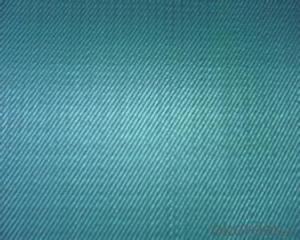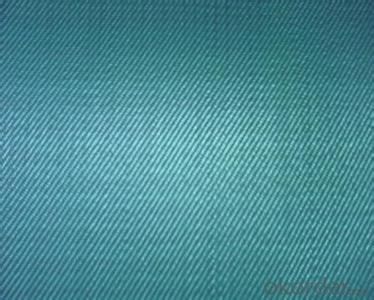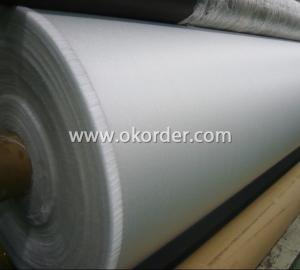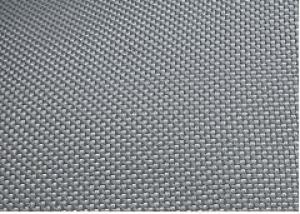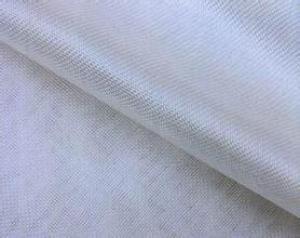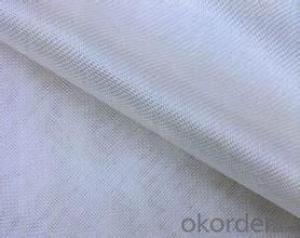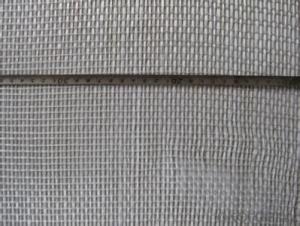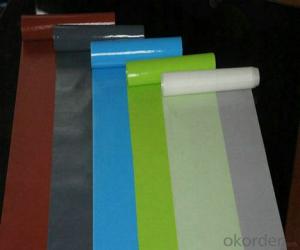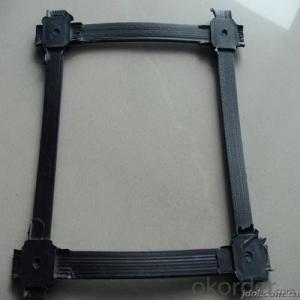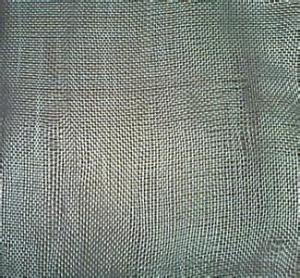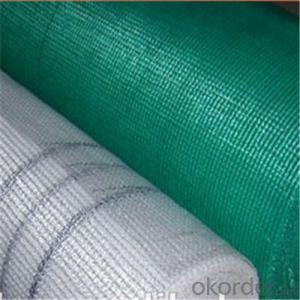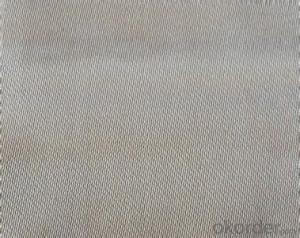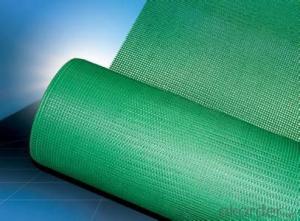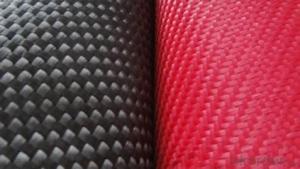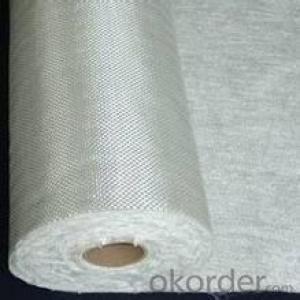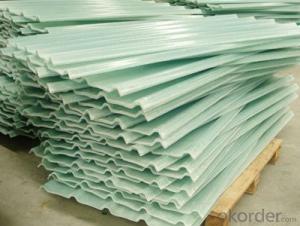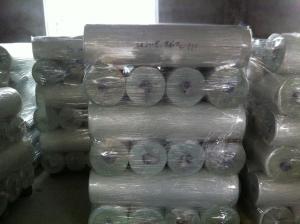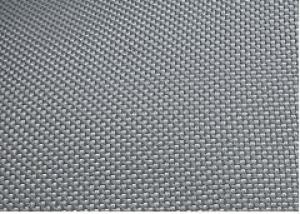Silica Electric Fiberglass Waterproofing Fabric Cloth
- Loading Port:
- China Main Port
- Payment Terms:
- TT OR LC
- Min Order Qty:
- -
- Supply Capability:
- -
OKorder Service Pledge
Quality Product, Order Online Tracking, Timely Delivery
OKorder Financial Service
Credit Rating, Credit Services, Credit Purchasing
You Might Also Like
Quick Details
| Place of Origin: | Brand Name: | Model Number: | |||
| Application: | Weight: | Width: | |||
| Mesh Size: | Weave Type: | Yarn Type: | |||
| Alkali Content: | Standing Temperature: | desity of warp: | |||
| desity of wefy: |
Packaging & Delivery
| Packaging Detail: | opp bag then carton box |
| Delivery Detail: | 15-20days after received deposit |
Specifications
1.temperature of fireproof:1770-2000
2.breaking strength:2100N/50NM
3.texture:plain weave
- Q: How does fiberglass fabric perform in extreme temperatures in HVAC systems?
- HVAC systems are well aware of the exceptional performance of fiberglass fabric in extreme temperatures. This material is perfect for insulation because it can endure high temperatures without compromising its structural integrity or insulation properties. When it comes to hot environments, fiberglass fabric acts as a barrier, blocking the transfer of heat between different areas within the HVAC system. It effectively traps heat within the desired space, ensuring energy efficiency and minimizing heat loss. Similarly, in cold temperatures, fiberglass fabric functions as an insulator, preventing heat from escaping and maintaining a consistent temperature within the HVAC system. This reduces energy consumption and ensures optimal performance. Moreover, fiberglass fabric is fire-resistant and does not emit toxic gases when exposed to extreme temperatures. This makes it a safe option for HVAC systems, as it does not contribute to the spread of fires or pose health hazards in case of accidental overheating. Another advantage of fiberglass fabric in extreme temperatures is its durability and long lifespan. It remains intact and unimpaired when subjected to high or low temperatures, making it suitable for prolonged use in HVAC systems. It can withstand the thermal cycling that occurs within the system without compromising its insulation properties or structural integrity. In conclusion, fiberglass fabric is a reliable and efficient material for extreme temperatures in HVAC systems. It offers insulation, energy efficiency, safety, and durability, making it a popular choice for various HVAC applications.
- Q: How does fiberglass fabric handle moisture?
- Fiberglass fabric has excellent resistance to moisture and is considered to be highly water-resistant. Due to its composition of woven glass fibers, it does not absorb water and is unaffected by moisture or humidity. This makes fiberglass fabric ideal for applications where exposure to moisture is expected, such as boat hulls, outdoor furniture, and building materials. Additionally, fiberglass fabric does not promote the growth of mold or mildew, further enhancing its ability to handle moisture.
- Q: Can fiberglass fabric be used in low-temperature applications?
- Indeed, low-temperature applications can make use of fiberglass fabric. This material is renowned for its remarkable thermal insulation characteristics, rendering it appropriate for deployment in low-temperature surroundings. It is frequently utilized in various scenarios, including cryogenic insulation, cold storage facilities, and refrigeration systems. The fabric itself possesses a diminished thermal conductivity and can endure exceedingly low temperatures without compromising its structural integrity. Moreover, it exhibits resilience against moisture, chemicals, and UV radiation, thereby establishing itself as a dependable and long-lasting option for low-temperature applications.
- Q: What is the dimensional stability of fiberglass fabric?
- The dimensional stability of fiberglass fabric refers to its ability to maintain its shape and size when subjected to various external factors such as temperature changes, moisture, and mechanical stress. Fiberglass fabric is known for its excellent dimensional stability, as it exhibits minimal shrinkage, expansion, or distortion over time. This property makes it highly suitable for applications where precise measurements and consistent form are crucial, such as in the construction industry or manufacturing of composite materials.
- Q: Is fiberglass fabric resistant to UV degradation in outdoor applications?
- Fiberglass fabric, indeed, boasts a remarkable resistance to UV degradation when utilized outdoors. Its composition consists of fibers deliberately crafted to endure extended exposure to sunlight and various environmental elements. Moreover, the fabric undergoes treatment with exclusive coatings or finishes that furnish supplementary safeguarding against UV radiation. This exceptional UV resistance renders fiberglass fabric an optimal selection for outdoor purposes that entail sunlight exposure, such as awnings, canopies, and outdoor furniture. Furthermore, fiberglass fabric retains its durability and integrity even after enduring years of UV ray exposure, guaranteeing its enduring performance in outdoor environments.
- Q: How does fiberglass fabric handle vibration?
- Fiberglass fabric is known for its excellent performance in handling vibration. Due to its unique composition and structure, fiberglass fabric has inherent properties that make it highly resistant to vibration. One key aspect that contributes to its vibration handling capability is its high tensile strength. Fiberglass fabric is made by weaving strands of fiberglass together, creating a strong and durable material. This high tensile strength enables the fabric to withstand the forces exerted by vibrations without undergoing deformation or damage. Additionally, fiberglass fabric has a low density, which means it is lightweight and has a high strength-to-weight ratio. This characteristic allows the fabric to effectively dissipate vibrations and absorb energy, minimizing the transmission of vibrations to the surrounding environment. Furthermore, fiberglass fabric is also known for its excellent dimensional stability. It maintains its shape and structure even under dynamic conditions, which is crucial in vibration-prone applications. This stability ensures that the fabric remains intact and functional, preventing any negative effects on the overall performance of the system. Overall, fiberglass fabric is a reliable and effective material for handling vibrations. Its high tensile strength, low density, and dimensional stability make it an ideal choice for various industries and applications where vibration control is essential.
- Q: Can fiberglass fabrics be used for geotextile applications?
- Yes, fiberglass fabrics can be used for geotextile applications. They have excellent properties such as high strength, durability, and resistance to chemicals, which make them suitable for various geotextile functions like soil stabilization, erosion control, and drainage.
- Q: What are the different weights per square yard available for fiberglass fabric?
- The weights per square yard available for fiberglass fabric vary depending on the intended use and specific requirements of the project. Generally, fiberglass fabric is available in weights ranging from 0.5 ounces per square yard (OSY) to 8 OSY or even higher. These different weights offer a wide range of options to suit various applications. Lighter weight fiberglass fabrics, such as those around 0.5-1.5 OSY, are ideal for applications that require a lightweight and flexible material. They are commonly used in industries such as aerospace, automotive, and marine for applications such as surfboards, aircraft interiors, and lightweight composite structures. Medium weight fiberglass fabrics, typically around 2-4 OSY, offer a balance between flexibility and strength. They are commonly used in applications like boat construction, wind turbine blades, and sporting goods where a balance between weight and durability is required. Heavier weight fiberglass fabrics, ranging from 5 OSY and above, are known for their superior strength and stiffness. These fabrics are commonly used in applications such as industrial reinforcements, construction, insulation, and high-performance composites. It is important to note that the specific weights available may vary among manufacturers, so it is advisable to consult with suppliers or check their product catalogs to determine the full range of weights per square yard available for fiberglass fabric.
- Q: How are fiberglass fabrics manufactured?
- Fiberglass fabrics are created using a method called the fiberglass weaving process, which consists of multiple steps resulting in the production of top-notch fiberglass fabrics. To start the manufacturing of fiberglass fabrics, fiberglass yarns are produced. This is done by melting raw materials like silica sand, limestone, and soda ash at high temperatures. The molten glass is then extruded through tiny holes, forming delicate fibers. These fibers are subsequently cooled and spun into yarns. Once the fiberglass yarns have been made, the next phase is the weaving process. During this stage, the yarns are intertwined on a loom to form a woven fabric. Different weaving patterns can be employed to achieve specific fabric qualities, such as strength, flexibility, or thickness. Following the weaving process, the fiberglass fabrics undergo a finishing treatment. This treatment involves the application of a coating or sizing to enhance the fabric's performance and durability. The coating can provide additional properties like fire resistance, water repellency, or chemical resistance. After the completion of the finishing treatment, the fiberglass fabrics are subject to quality control inspection. Any defects or irregularities are identified, and the fabrics are either repaired or discarded if necessary. The final step in the manufacturing process involves packaging and distribution. Depending on their size and intended use, the fiberglass fabrics are either rolled onto spools or folded into bundles. They are then packaged and shipped to customers or distributors who will utilize them in various applications, such as insulation, filtration, composites, or reinforcement in construction materials. In summary, the production of fiberglass fabrics is a meticulous and intricate process that ensures the creation of top-quality fabrics with desired characteristics.
- Q: How does fiberglass fabric handle moisture and humidity?
- Fiberglass fabric is highly resistant to moisture and humidity due to its inherent properties. Unlike natural fibers such as cotton or wool, fiberglass is hydrophobic, meaning it repels water and does not readily absorb moisture. This feature allows the fabric to resist mold and mildew growth, making it suitable for use in humid environments. Furthermore, fiberglass fabric does not retain moisture, which prevents it from becoming heavy or sagging when exposed to water or high humidity. This characteristic is especially beneficial in applications where the fabric needs to maintain its strength and shape despite moisture exposure. Additionally, fiberglass fabric is known for its dimensional stability, meaning it does not significantly expand or contract when subjected to changes in humidity levels. This stability ensures that the fabric retains its original shape and size under varying moisture conditions, making it a reliable choice for applications that require consistent performance. Overall, fiberglass fabric's resistance to moisture and humidity makes it a durable and reliable material for a wide range of applications, including boat covers, outdoor furniture, and industrial insulation.
Send your message to us
Silica Electric Fiberglass Waterproofing Fabric Cloth
- Loading Port:
- China Main Port
- Payment Terms:
- TT OR LC
- Min Order Qty:
- -
- Supply Capability:
- -
OKorder Service Pledge
Quality Product, Order Online Tracking, Timely Delivery
OKorder Financial Service
Credit Rating, Credit Services, Credit Purchasing
Similar products
Hot products
Hot Searches
Related keywords
